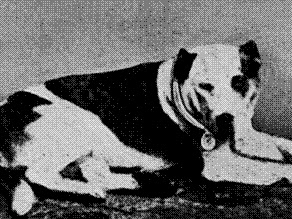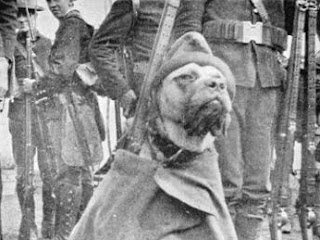Some believe that if it wasn't for Peritas, Alexander the Great would have died before his time - changing the course of history.
Alexander III of Macedon earned the epithet "the Great" due to his success as a military commander. Being a noble and commander, Alexander had many dogs including hunting and war dogs. His favorite was his war dog Peritas, who accompanied him during his military exploits. Many believe Peritas was a Molossian, an enormous and powerful breed of ancient Greece that was bred to fight in war. According to the AKC, "Alexander is known to have crossed the giant Macedonian and Epirian war dogs with the short haired "Indian" dogs to create the [now extinct] Molossus. This animal is easily recognized as the great forefather of the Neapolitan Mastiff." However, some believe Peritas was more of an Afghan Hound or Saluki, rather than an early Mastiff type.
According to Pliny the Elder (a Roman author AD 23 - AD 79), it was probably Alexander's uncle, the King of Epirus, who gave him Peritas because the dog had managed to attack and beat both a lion and an elephant. Alexander had a special bond with Peritas, just like he did with his horse Bucephalus. Both animals had a city named in their honor after their deaths. According to Plutarch (a Greek biographer AD 46 - AD 120), after recalling the story of Bucephalus, "It is said, too, that when he lost a dog also, named Peritas, which had been reared by him and was loved by him, he founded a city and gave it the dog's name." There are two versions of how the brave dog saved his master's life and died doing so.
One says Peritas died after bringing down a war elephant that was charging towards Alexander, and the other claims the dog died when saving Alexander's life from the Mallians during an attack in India. The second version says Alexander was trapped behind fortifications away from his troops, and Leonnatus (an officer of Alexander) who heard Peritas howling behind him told the dog to run to Alexander. Peritas fought his way to his wounded master and was able to hold the Mallians off long enough for Alexander's men to arrive and save him. When the men arrived, Peritas who was badly wounded had his head on his master's lap and died.
Peritas died around 350 BC, and besides naming a city after the brave and heroic dog, Alexander the Great honored Peritas with a large funeral and ordered the local residents to honor his dog's death every year with a festival.































